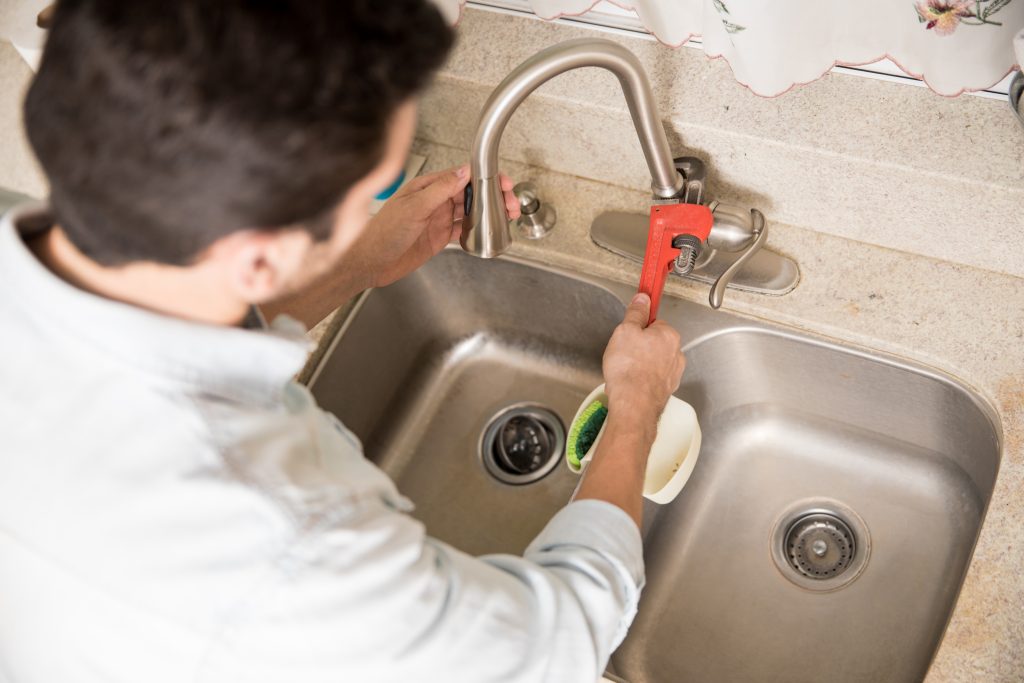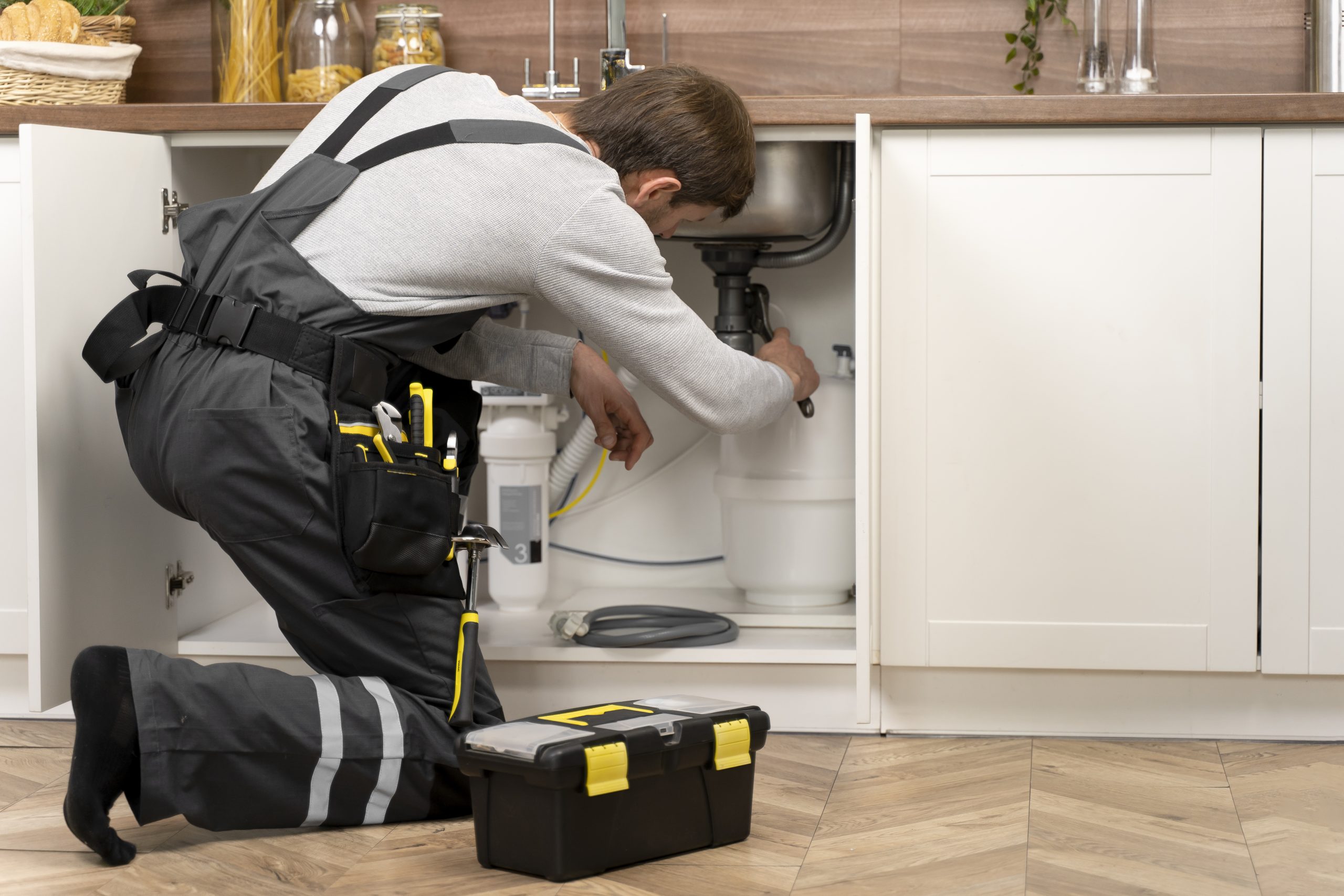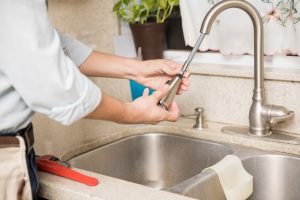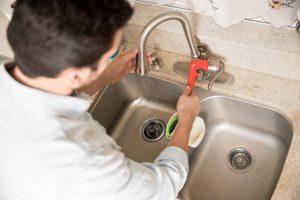A clogged sink can turn an ordinary day into an irritating mess.
Whether it’s your kitchen sink refusing to drain after washing dishes or a bathroom basin filling faster than it empties, a blockage never comes at a convenient time.
The good news? Most sink clogs are easy to fix at home, and you don’t always need a plumber or harsh chemicals.
In this guide — prepared with insights from plumbing specialists at EPG247 you’ll learn why sinks get clogged, how to unclog them step-by-step, and how to stop the problem from returning.
Understanding How a Sink Works
Before you dive into fixing, it helps to know what’s going on under the basin.
Your sink drain consists of:
- A drain stopper or strainer that catches debris.
- A drain pipe that connects to the main plumbing line.
- A P-trap, the curved section under the sink that holds water to block sewer gases.
When food scraps, grease, soap scum, or hair accumulate in any part of this system, they restrict the flow of water — causing slow drainage or complete blockage.
Why Sinks Get Clogged
Sink clogs usually build up gradually. Understanding the cause helps you prevent them later.
1. Grease and Fat
In kitchens, the main culprit is cooking oil or fat poured down the drain.
Once it cools, it solidifies and sticks to the pipe walls, catching other debris until the pipe narrows completely.
2. Food Waste
Bits of rice, pasta, eggshells, or coffee grounds may seem harmless, but they expand or clump together, blocking the drain trap.
3. Hair and Soap Residue
Bathroom sinks commonly clog from hair mixed with soap or toothpaste, forming sticky lumps inside the P-trap.
4. Foreign Objects
Cotton buds, jewellery, or small plastic pieces can accidentally slip into the drain, creating an instant blockage.
5. Hard Water and Mineral Buildup
If you live in a hard water area, limescale can collect inside pipes, reducing water flow.
Early Warning Signs
Spotting a clog early makes fixing it easier. Watch for:
- Gurgling sounds while draining.
- Water pooling or draining slowly.
- Bad odours coming from the plughole.
- Rising water when another fixture (like dishwasher) drains.
When you notice these, it’s time to act before the blockage hardens.
What You’ll Need
Before starting, gather a few simple tools:
- Rubber gloves
- Bucket or bowl
- Old toothbrush
- Baking soda + vinegar
- Boiling water
- Plunger or drain snake (optional)
- Adjustable wrench (for removing the P-trap)
Keep a towel nearby, things can get messy!
Step-by-Step: How Can You Unclog a Sink
Now let’s get into the methods, from the easiest to the more advanced.
1. Boiling Water Flush (The Simplest Method)
Boiling water can dissolve grease, soap, and mild organic buildup.
Steps:
- Boil a full kettle of water.
- Slowly pour half down the drain, wait 30 seconds.
- Pour the rest.
- Run hot tap water to check flow.
If it drains freely, the problem’s solved. If not — move to the next method.
2. Baking Soda and Vinegar Reaction
This natural cleaning combo breaks down mild blockages and neutralises odours.
Steps:
- Pour ½ cup of baking soda into the drain.
- Follow with 1 cup of vinegar.
- Plug the drain to contain the fizzing reaction.
- Wait 15 minutes, then flush with boiling water.
You’ll often hear bubbling — that’s a good sign it’s working.
3. Remove and Clean the Sink Stopper
Bathroom sinks often clog near the stopper because of hair and soap buildup.
Steps:
- Twist or lift the stopper out (some may need unscrewing under the basin).
- Clean off debris using an old brush and warm soapy water.
- Replace the stopper securely.
You’ll be surprised how much gunk hides under there.
4. Use a Plunger (for Stubborn Clogs)
If simple methods fail, suction power might help.
Steps:
- Fill the sink halfway with warm water.
- Position the plunger over the drain.
- Pump vigorously 10–15 times.
- Lift the plunger — if water drains quickly, the blockage is cleared.
If you have a double sink, block the other drain with a cloth to maintain pressure.
5. How to Unclog a Sink Without a Plunger
Don’t have a plunger? No problem. Try these alternatives:
Method A: Wire Hanger
Straighten a metal hanger and make a small hook at one end.
Insert it into the drain and fish out hair, gunk, or debris.
Method B: Salt and Baking Soda
Mix ½ cup of salt with ½ cup of baking soda.
Pour it into the drain and wait 30 minutes, then flush with boiling water.
Method C: Enzyme Cleaner
Eco-friendly enzyme-based drain cleaners dissolve organic waste without harming pipes.
They’re slower but ideal for maintenance cleaning.
6. Clean the P-Trap Manually
If the clog persists, it’s probably in the curved P-trap.
Steps:
- Place a bucket under the trap.
- Loosen the slip nuts with your hand or wrench.
- Remove the trap and clear any buildup inside.
- Rinse with hot water and reassemble carefully.
When you run the tap again, the flow should be smooth.
7. Use a Drain Snake (or Plumbing Auger)
For deep or stubborn clogs, a drain snake reaches further into the pipe.
Steps:
- Insert the snake into the drain and rotate clockwise.
- When you feel resistance, keep turning to grab debris.
- Pull out, clean, and repeat until the line feels clear.
This tool is especially useful for old homes with narrow pipes.

How to Unclog a Kitchen Sink
Kitchen sink clogs are usually grease-based.
Use boiling water and baking soda frequently to keep them clean.
For a double-bowl sink, seal one side and plunge the other for better pressure.
Never use chemical drain cleaners — they can melt PVC pipes and create toxic fumes when mixed with hot water.
How to Unclog a Bathroom Sink
Bathroom sinks often collect hair and toothpaste residue.
Remove the stopper, fish out trapped hair, then clean with vinegar and baking soda.
Finish by flushing with hot water to dissolve leftover grime.
Common Sink Problems and DIY Difficulty
Problem | Typical Cause | DIY Fix Difficulty |
Slow draining sink | Mild grease buildup | Easy (boiling water / vinegar) |
Full blockage | Food or hair clog in P-trap | Moderate (requires removal) |
Foul odour | Organic residue | Easy (baking soda + vinegar) |
Gurgling noise | Air trapped in pipe | Moderate (drain snake) |
Repeated clogs | Deep pipe buildup | Hard (may need plumber) |
What Not to Do
- Don’t mix chemical cleaners — dangerous reactions can occur.
- Avoid using sharp objects or wires that can puncture pipes.
- Never pour boiling water directly into a porcelain sink (especially if cold) — it can crack.
- Don’t overtighten pipe connections when reassembling.
Preventing Future Sink Clogs
Once your sink is clear, simple habits can prevent clogs permanently.
- Use a strainer: Catch food scraps and hair before they enter the drain.
- Dispose grease in the bin: Pour fats and oils into a container, not the sink.
- Rinse with hot water weekly: Keeps grease soft and moving.
- Clean the P-trap occasionally: Especially in kitchens with frequent cooking.
- Avoid flushing non-biodegradable waste: Wipes, tissues, and cotton should never go down the drain.
Small steps like these keep your pipes free-flowing and odour-free year-round.
Environmental Tip: Avoid Chemical Drain Cleaners
Many commercial drain cleaners contain caustic soda or acid that can corrode metal pipes and harm aquatic life when they enter wastewater systems.
Natural alternatives like baking soda + vinegar or enzyme cleaners are safer, cheaper, and equally effective for maintenance.
By choosing eco-friendly methods, you protect both your plumbing and the planet.
When to Call a Professional
Sometimes, DIY methods just aren’t enough.
Call a plumber if:
- The water still doesn’t drain after multiple methods.
- You notice foul smells coming from below the floor.
- You hear constant gurgling or see backflow in other drains.
- The clog reappears within days.
A professional service like EPG247 can inspect your pipes using cameras, clear blockages deep in the system, and ensure everything flows perfectly again.
FAQs
How often should I clean my sink drain?
They contain mild acids that can loosen small debris, but they’re not as effective as vinegar or enzyme cleaners.
Can cola or fizzy drinks help unclog a sink?
They contain mild acids that can loosen small debris, but they’re not as effective as vinegar or enzyme cleaners
How long should I wait after using baking soda and vinegar?
Wait 15–30 minutes before rinsing with boiling water for the best reaction.
What if my sink keeps clogging even after cleaning?
There might be a deeper obstruction in the main line — that’s when professional inspection helps.
an I use a wet/dry vacuum to clear a clog?
Yes, if you seal the drain tightly. It can suck out trapped debris effectively.
Are chemical cleaners safe for all sinks?
No. They can damage PVC pipes and harm septic systems. Stick to natural methods.
Conclusion
A clogged sink is one of those problems that seems serious — until you know how easy it is to solve.
With a little patience and the right technique, you can restore full flow in minutes without spending on harsh chemicals or emergency plumbers.
Whether it’s your kitchen or bathroom, remember that prevention is the best cure.
Regular maintenance, mindful waste disposal, and natural cleaning keep your drains healthy and your home running smoothly.
This educational guide was prepared with insights from plumbing professionals at EPG247 to help homeowners fix and prevent sink blockages safely, effectively, and sustainably.









